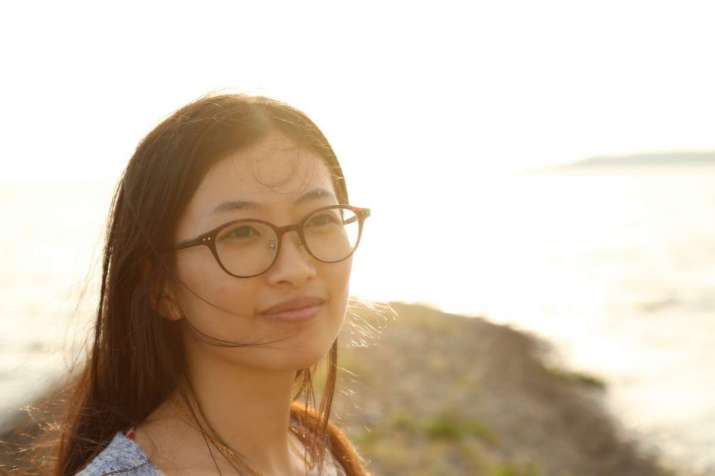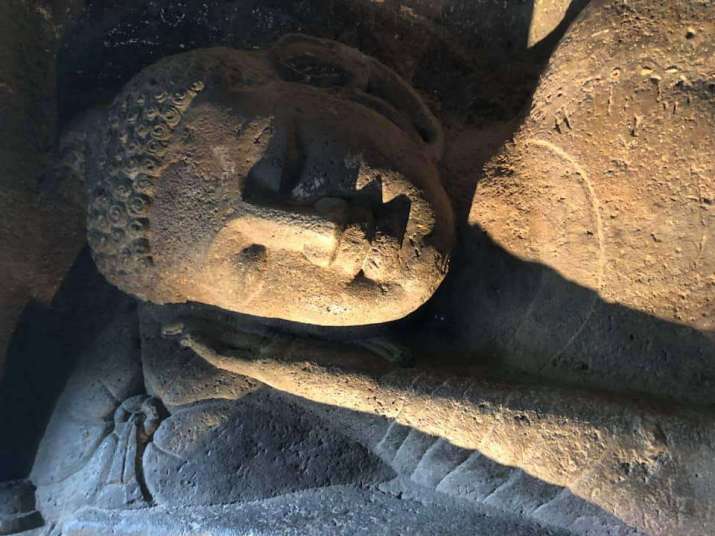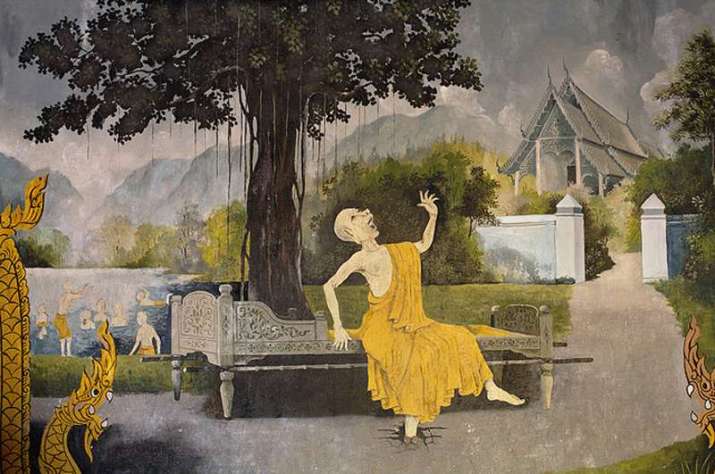FEATURES|THEMES|People and Personalities
After His Memory Fades: Exploring Buddhist Textual Narratives with Channa Li
 Channa Li. Image courtesy of Channa Li
Channa Li. Image courtesy of Channa LiThe long period between the Buddha’s Parinirvana and the earliest-dated Buddhist texts—the Gandhari manuscripts (found near Jalalabad, Afghanistan)—is one of the most enigmatic and fascinating eras in world history. It is a centuries-long gap during which the generation of the Hearers (sravaka; the disciples fortunate enough to personally hear the Buddha’s voice) passed away, and the memory of the Buddha and his world receded. It also saw the advent of questions concerning the governance of the sangha and how the word of the Buddha (buddhavacana) should be transmitted so it could be remembered and recited. The stories recorded to address these questions would influence cultures far beyond India: in regions as disparate as China and Tibet, stories of the Buddha and the people who interacted with him would form critical rubrics of the Buddhist identity.
These narratives are the focus of Channa Li’s work. A promising and articulate young scholar from China, Channa did her BA and MA at Renmin University, China, before going on to Leiden University in the Netherlands for her doctoral research. Initially interested in the history of Asian kingdoms and empires, she grew interested in Tibetology and transitioned into a formal doctorate in Buddhist studies at Leiden University. Li was an awardee of the American Council of Learned Societies’ (ACLS) Robert H. N. Ho Family Foundation Dissertation Fellowship* in 2017.
Li’s ACLS dissertation, based on her PhD thesis, was titled, “Challenging the Buddha’s Authority: How Buddhist Narrative Traditions Negotiate Religious Authority in Stories.” She based her research partially on the Sutra of the Wise and Foolish (Damamukanidana Sutra), a collection of 62 stories (69 in a separate version) about the Buddha and his disciples. Discovered by Chinese monks visiting Khotan (now Yutien in modern China), it was translated from Tibetan into Chinese in 445 CE. The stories, Channa argues, are distinct from fiction in the modern sense. Specifically, these stories served as spiritual answers to questions asked by the community in times of doctrinal or administrative confusion, to provide clarity and guidance.
 Buddha entering Parinirvana in Ajanta cave 26. Image courtesy of the author
Buddha entering Parinirvana in Ajanta cave 26. Image courtesy of the authorIn her thesis, Li focuses on narratives about Devadatta, the Buddha’s cousin and nemesis, and Shariputra, the Buddha’s chief disciple and right hand man. “The consensus in scholarly circles is that Devadatta’s emergence as a bogeyman of the sangha is a relatively late development, if one looks at his earliest context in the Vinaya,” she says. Traditional records have it that the Vinaya texts were compiled orally by Reverend Upali at the First Council immediately post-Parinirvana.
“To present my argument in a simplified—or perhaps oversimplified—way, in the Vinaya, Devadatta is a figure used to illustrate the criteria and consequences for schism and schismatics. It was initially in a legal context that the figure of Devadatta was recorded in Buddhist texts, rather than a polemic one. But as we enter the era of the Abhidharma [much later than the canonical texts], schism becomes not just a legal question but also a morally reprehensible act, a grave evil. It is so evil that it becomes categorized as the fifth of the five grave offences. In that sense, Devadatta becomes a bad guy because he was reinterpreted as a schismatic trying to split the Buddha’s sangha. Surely a man advocating schism would be a villain.”
The new notoriety of Devadatta raised some retrospective questions that troubled Buddhist editors of the canon. If Devadatta was so evil, why did the Buddha not expel him from his new and fragile order until Devadatta had gathered a fairly large group of misled followers? Why did Devadatta manage to come so close to harming the Blessed One on several occasions? An insightful corporate manager in the 21st century, let alone an enlightened being, should have easily identified the malevolent personality and intentions of a person like Devadatta, whom we are told was duplicitous, craven, and power-hungry.
 A 19th century mural at Wat Phrathat Doi Suthep depicting Devadatta being swallowed by the earth for his crimes against the Buddha. From berfrois.com
A 19th century mural at Wat Phrathat Doi Suthep depicting Devadatta being swallowed by the earth for his crimes against the Buddha. From berfrois.comBecause the Buddha had entered Parinirvana centuries earlier, the conundrums that arose among the Buddhist community needed answers that would be relevant to the sangha’s practice. In time, these answers also needed to provide a morally or spiritually legitimizing dimension. Senior members of the monastic community came together to formulate narratives that would resolve the political and legal questions of their time, but additional theological issues that were less concerned with the Vinaya correspondingly arose.
Li observes that the answers given in the texts she has researched are religious answers to questions initially of law and governance, the latter being from an earlier context. “But this was before they morphed into cosmic theories as to how the Buddha and Devadatta’s relationship could endure over countless past lives if one was so good and one was so evil.” Nevertheless, by charting how ancient narratives provided answers to questions that had real stakes for the dispensation (sasana), Li hopes to illuminate the murkier pages of Buddhist history lurking in the Buddhist scriptures.
Li will finish her doctorate this year. Her future projects include the compilation of a critical edition of the Sutra of the Question of Maitreya, which is preserved in Dunhuang Tibetan manuscript besides the known Kanjur versions, and a project on the influence of Buddhist narratives on the writing of many “historical events” in early Tibetan historiographies such as the Ka khol ma (Pillar History) and the dBa' bzhed (Testament of Ba). For Li, this is where her future interests lie: offering not necessarily conclusive answers, but thoughtful and sound analyses that will help Buddhist studies scholars ask the right questions about the Buddhist story in world history.
* About The Robert H. N. Ho Family Foundation Program in Buddhist Studies:
The American Council of Learned Societies (ACLS) invites applications in the 2018-19 competition year of The Robert H. N. Ho Family Foundation Program in Buddhist Studies. In cooperation with the Foundation, ACLS offers an integrated set of fellowship and grant competitions supporting work that will expand the understanding and interpretation of Buddhist thought in scholarship and society, strengthen international networks of Buddhist studies, and increase the visibility of innovative currents in those studies.
• Dissertation Fellowships: one-year stipends to PhD candidates for full-time preparation of dissertations
• Postdoctoral Fellowships: two-year stipends to recent recipients of the PhD for residence at a university for research, writing, and teaching
• Research Fellowships: one-year stipends for scholars who hold a PhD degree, with no restrictions on time from the PhD
• Grants for Critical Editions and Scholarly Translations: one-year stipends for collaborative or individual projects focused on the creation of critical editions, translation of canonical texts, and translation of scholarly works
• New Professorships: multi-year grants to colleges and universities to establish or expand teaching in Buddhist studies
These are global competitions. There are no restrictions as to the location of work proposed, the citizenship of applicants, or the languages of the final written product. Applications must be submitted in English. Program information and applications are available at http://www.acls.org/programs/buddhist-studies/.
Deadline for submission of fellowship applications: November 14, 2018.
Deadline for institutional applications for New Professorships: January 9, 2019.
For more information, please email BuddhistStudies@acls.org or visit the Facebook page.
See more
The Earliest Vinaya and the Beginnings of Buddhist Literature (A Handful of Leaves)
The Linguistic and Textual Antecedents of The Sūtra of the Wise and the Foolish (SINO-PLATONIC PAPERS)
Related features from Buddhistdoor Global
A Buddhist Conspiracy Theory: The Struggle for Succession after the Buddha’s Death
Professor Pauline Yu: Enriching Life and Work with the Skills of the Humanities














